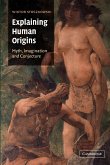In this book John Zaller develops a comprehensive theory to explain how people acquire political information from elites and the mass media and convert it into political preferences. Using numerous specific examples, Zaller applies this theory to the dynamics of public opinion on a broad range of subjects, including domestic and foreign policy, trust in government, racial equality, and presidential approval, as well as voting behaviour in U.S. House, Senate, and presidential elections. The thoery is constructed from four basic premises. The first is that individuals differ substantially in their attention to politics and therefore in their exposure to elite sources of political information. The second is that people react critically to political communication only to the extent that they are knowledgeable about political affairs. The third is that people rarely have fixed attitudes on specific issues; rather, they construct 'preference statements' on the fly as they confront each issue raised. The fourth is that, in constructing these statements, people make the greatest use of ideas that are, for various reasons, the most immediately salient to them. Zaller emphasizes the role of political elites in establishing the terms of political discourse in the mass media and the powerful effect of this framing of issues on the dynamics of mass opinion on any given issue over time.
Table of contents:
List of tables and figures; Preface; 1. Introduction: the fragmented state of opinion research; 2. Information, predispositions, and opinion; 3. How citizens acquire information and convert it into public opinion; 4. Coming to terms with response instability; 5. Making it up as you go along; 6. The mainstream and polarization effects; 7. Basic processes of 'attitude change'; 8. Tests of the one-message model; 9. Two-sided information flows; 10. Information flow and electoral choice; 11. Evaluating the model and looking toward future research; 12. Epilogue: the question of elite domination of public opinion; Measures appendix; References; Index.
Hinweis: Dieser Artikel kann nur an eine deutsche Lieferadresse ausgeliefert werden.
Table of contents:
List of tables and figures; Preface; 1. Introduction: the fragmented state of opinion research; 2. Information, predispositions, and opinion; 3. How citizens acquire information and convert it into public opinion; 4. Coming to terms with response instability; 5. Making it up as you go along; 6. The mainstream and polarization effects; 7. Basic processes of 'attitude change'; 8. Tests of the one-message model; 9. Two-sided information flows; 10. Information flow and electoral choice; 11. Evaluating the model and looking toward future research; 12. Epilogue: the question of elite domination of public opinion; Measures appendix; References; Index.
Hinweis: Dieser Artikel kann nur an eine deutsche Lieferadresse ausgeliefert werden.








